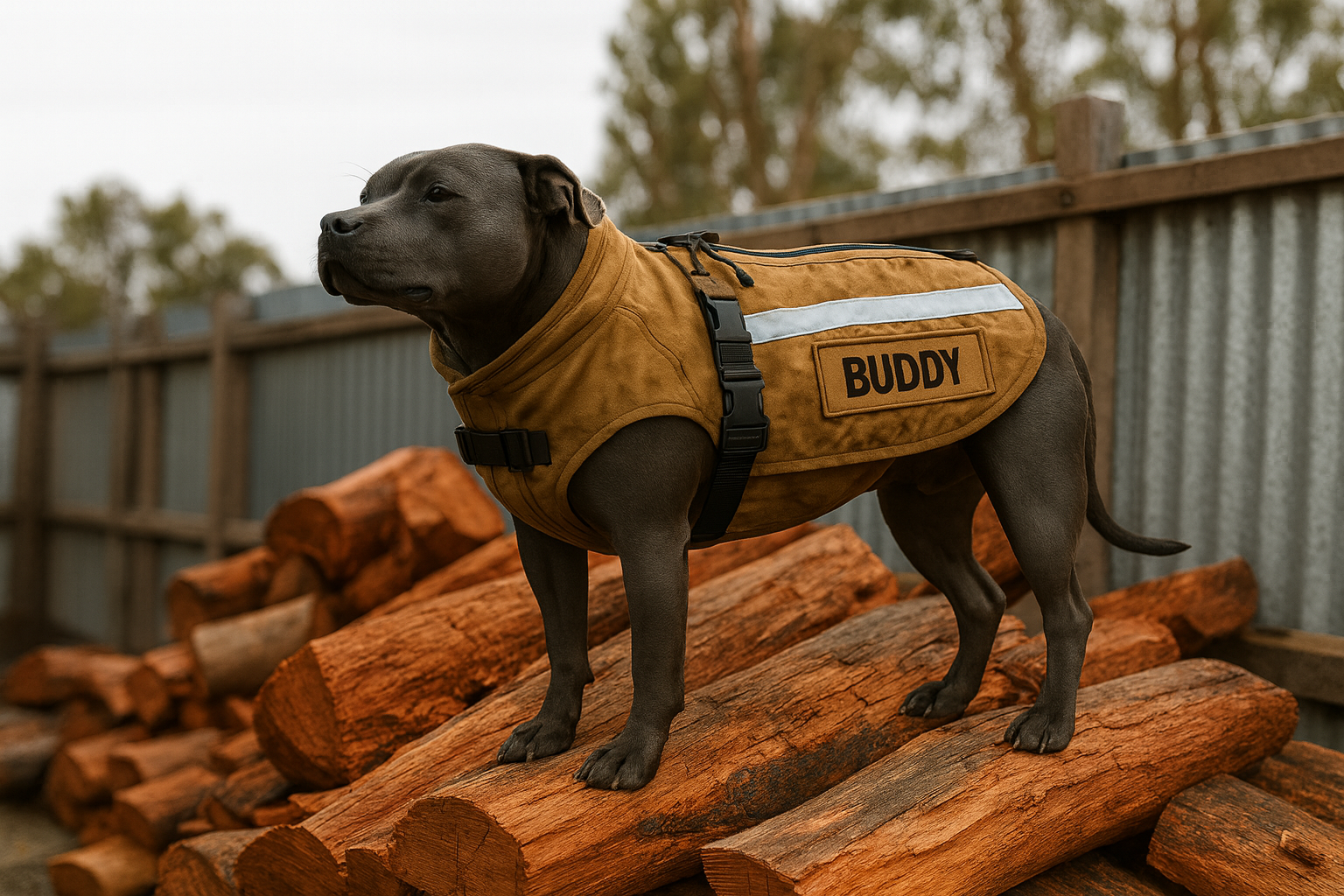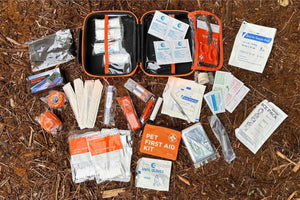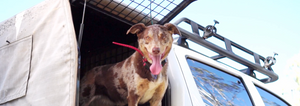Australian weather has commitment issues. One day your dog’s sunbathing on the deck, the next they’re sulking in the rain like it’s the end of the world. And let’s be honest, nothing makes you feel like a bad pet parent faster than a soggy, shivering pup giving you the “how could you?” look.
That’s where a dog coat comes in. But should you go waterproof for the rain, or insulated for the chill? Picking the wrong one can mean either an overheated dog or one that looks like a drowned rat. Let’s break it down and figure out which waterproof dog coat in Australia (or insulated one) suits your climate, and your furry friend’s dignity.
TL;DR – Jump to a Section
-
The Case for Waterproof Dog Coats
-
When Insulated Dog Coats Shine
-
How to Measure Your Dog for the Perfect Fit
-
Climate Matters: Matching the Coat to the Season
-
Style vs Function
-
Frequently Asked Questions
-
Final Thoughts
The Case for Waterproof Dog Coats
Waterproof coats are like umbrellas for dogs, except less awkward and without the risk of poking strangers in the eye. Perfect for areas with surprise downpours, these coats keep your pup’s neck, chest, and tail dry so you’re not towelling off a swamp creature after every walk.
Pros:
-
Keeps your dog dry in rain or soggy grass.
-
Usually lightweight, so they don’t overheat.
-
Easy to clean — mud just wipes straight off.
Cons:
-
Doesn’t add much warmth.
-
Feels a bit “shell jacket” compared to padded options. Hikers out there will know what we're talking about.
For anyone living where the wet season is more regular than Netflix reruns, a waterproof dog coat Australia is the obvious choice.

When Insulated Dog Coats Shine
Insulated coats are basically dog light weight puffer jackets. They’re cosy, snug, and perfect for frosty mornings when your pup acts like stepping outside is cruel and unusual punishment. They wrap around your dog’s body and trap warmth, keeping short-haired or smaller breeds especially happy.
Pros:
-
Adds warmth on cold days.
-
Available in plenty of sizes for a proper fit.
-
Often stylish enough to double as a fashion statement.
Cons:
-
Can be too hot for hyperactive dogs or warmer climates.
-
Trickier to wash if they get muddy.
Think of them as the winter jumper of the dog world, essential in Melbourne winters, total overkill in Darwin.

How to Measure Your Dog for the Perfect Fit
Buying a coat without measuring your dog is like buying jeans “by eye” — 99% chance of regret. Grab a soft tape and measure the following - it'll be super helpful:
-
Neck – Where the collar sits on the back of the head.
-
Chest – The widest part, behind the front legs.
-
Length – From base of neck to base of tail.
Always measure in cm. And if your pup falls between sizes, size up (Most brands will range from XS right up to XL or larger). Too tight and you’ll have a dog that moves like a sausage in shrink wrap. These three measurements will almost always be suitable for any dog great coat you purchase, and ensure your dog stays comfortable.
Climate Matters: Matching the Coat to the Season
Don’t just buy the cutest one. Review and match the coat to your dog’s climate (and tolerance for drama).
-
Rainy regions (Sydney, Brisbane, Darwin): Go waterproof.
-
Cold regions (Melbourne, Hobart, Canberra): Insulated all the way.
-
Mild regions (Perth, Adelaide): Insulating, as cold mornings are a lot more common than heavy rain.
If your dog refuses to step outside in drizzle, the waterproof option is a lifesaver. If they’re visibly shivering in winter, insulation is non-negotiable.

Style vs Function: Why Function Always Wins
Sure, you might think about how “cute” your dog looks in a coat, but when you’re out in the bush or battling sideways rain, function is what actually matters. A great coat isn’t about colour palettes or matching collars, it’s about keeping your dog warm, dry, and comfortable no matter the conditions.
That means checking the fit around the chest, neck, and tail, making sure your pup has full range of movement, and choosing materials that are durable, weather-resistant, and easy to clean. If a coat keeps your dog dry in a downpour, stops them from shivering on frosty mornings, and doesn’t rip the first time they brush past a fence post - it’s a winner.
At the end of the day, your dog doesn’t care if their coat is “stylish.” They care if it lets them run, sniff, and roll around without restriction. Function is freedom, and that’s what really matters.

Frequently Asked Questions
Do dogs actually need coats in Australia?
It depends on the climate and the breed. Short-haired or small breeds often struggle in cold mornings or alpine regions, while older dogs and those with certain health conditions benefit from added warmth. In the tropics, coats are usually unnecessary, but a lightweight waterproof dog coat in Australia can still help keep your pup dry during sudden downpours.
How do I measure my dog for the right fit?
Most brands recommend measuring from the base of the neck to the base of the tail, plus the girth of the chest. Coats are usually sized in centimetres (cm). A proper fit should cover the dog’s back without restricting movement at the shoulders or digging into the chest. If your dog is between sizes, it’s often better to size up for comfort.
Are waterproof dog coats breathable?
Good ones are. Cheap coats can trap heat and moisture, leaving your dog damp and uncomfortable. Look for fabrics that are both water-resistant and breathable, so your dog stays dry without overheating. This is especially important for active breeds or dogs in warmer climates.
Can I use an insulated coat in the rain?
Insulated coats are designed for warmth first, not wet weather. Some do have water-resistant outers, but most won’t handle a proper storm. If you live somewhere wet and cold, consider a combination coat with both waterproofing and insulation. Otherwise, layer a waterproof shell over an insulated base when conditions demand it.
How do I clean a dog coat after muddy walks?
Most dog coats are machine washable, but always check the label. For waterproof coats, avoid strong detergents that can strip the waterproof layer — a gentle wash is best. Insulated coats often benefit from air drying to maintain their loft. A quick wipe-down with a damp cloth can extend time between washes.
Do coats bother dogs or restrict movement?
A well-fitted coat should not interfere with walking, running, or toileting. If your dog freezes or refuses to move, it’s usually a sign the fit is wrong, the material is uncomfortable, or the coat is too heavy. Choose lightweight designs with adjustable straps around the chest and neck for the best results.
Can dogs wear coats indoors?
Generally, no — coats are meant for outdoor use. Leaving one on indoors risks overheating, especially for insulated coats. The exception is very old or sick dogs who struggle to regulate body temperature; in those cases, a lightweight layer indoors can help, but always under supervision.
How long should a dog coat last?
With proper care, a quality waterproof dog coat in Australia can last several years, even with regular use. Durability depends on the material and how rough your dog is. Waterproof shells may eventually need reproofing, while insulated coats can lose warmth if not stored and washed properly. Investing in a durable, functional design up front saves money long-term.
Final Thoughts
The big decision? Waterproof vs insulated. Think about your climate, your dog’s breed, and their activity level. Rainy coast? Go waterproof. Frosty mornings? Grab insulation.
And if you’re still unsure? Buy one of each. Because honestly, your furry friend deserves to stay dry, warm, and stylish while they drag you through puddles or across frosty lawns. We're currently making our own dog coats specifically built for Australia and our tough conditions. If you're interested, head over to our dog coats page, and keep your eyes peeled! See you soon.


